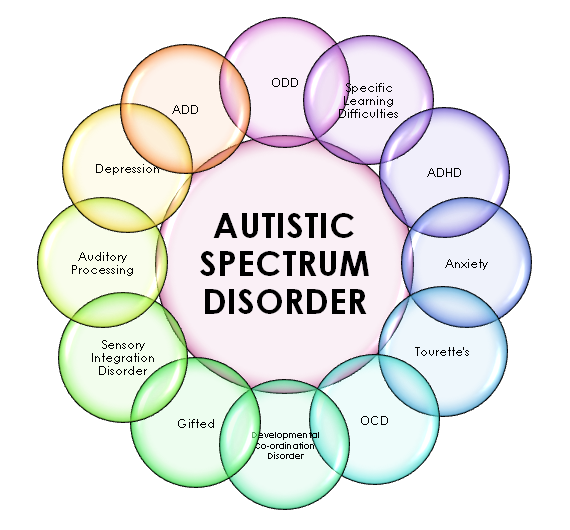Exploring Autism: Approaches for Reliable Communication and Communication
Efficient communication and communication with people on the autism range demand a detailed understanding of their one-of-a-kind demands and choices. Methods such as utilizing clear language, using aesthetic supports, and promoting consistent routines can significantly improve involvement and minimize stress and anxiety. Acknowledging the significance of non-verbal cues and shared rate of interests paves the way for purposeful links. However, the complexities of these approaches reveal further factors to consider that warrant exploration, particularly in just how they can be adjusted to diverse contexts and private experiences. What might these adaptations resemble in method?
Recognizing Autism Spectrum Condition
Autism Range Problem (ASD) encompasses a variety of neurodevelopmental problems defined by obstacles in social interaction, communication, and repeated habits. The term "range" shows the diverse symptoms and differing levels of extent experienced by individuals with ASD. While some might show substantial impairments, others may show high-functioning traits, permitting for greater independence in day-to-day live.
The onset of ASD typically happens in early youth, with signs usually identifiable by age 2. Very early indications might consist of postponed speech development, limited eye call, and troubles in recognizing social signs. Although the precise etiology of ASD remains vague, study suggests a combination of ecological and hereditary aspects plays a vital duty in its advancement.
As a result, treatments and assistance tailored to private demands are vital for cultivating communication and social abilities. Recognizing the complexity of ASD is essential for promoting awareness, acceptance, and reliable techniques that promote meaningful interactions with individuals on the range.

Value of Clear Interaction
Effective communication is crucial for cultivating understanding and connection, specifically for people with Autism Spectrum Disorder (ASD) Clear interaction not just facilitates social communications but additionally boosts the person's capability to express their ideas, requirements, and feelings. For individuals with ASD, the subtleties of language can frequently be challenging; as a result, utilizing uncomplicated and distinct language is important.
Furthermore, clear communication helps in reducing disappointment and anxiousness that might develop from misunderstandings. When messages are conveyed in a regular and straight fashion, individuals with ASD are better equipped to analyze details properly, which can significantly enhance their social engagement and involvement in various setups.
Establishing routines and making use of aesthetic supports can better boost clear communication. These techniques offer people with predictable frameworks that help comprehension and retention of details. Furthermore, actively paying attention and being patient throughout interactions advertises a supportive environment where individuals with ASD feel valued and comprehended.
Ultimately, focusing on clear communication not only empowers individuals with ASD but likewise cultivates more purposeful connections with their peers, caretakers, and the larger area, paving the means for collaborative partnerships and inclusive communications. - autism
Non-Verbal Interaction Methods
Interaction extends past words, and for people with Autism Spectrum Problem (ASD), non-verbal cues play a considerable duty web link in communications. Non-verbal communication strategies can consist of facial expressions, motions, body movement, and eye get in touch with, every one of which serve as crucial parts for conveying purposes and emotions.
Understanding and translating these non-verbal signals can boost communications with individuals with ASD. For instance, a cozy smile or open position can produce an inviting ambience, urging involvement. Making use of aesthetic aids-- such as picture cards or icons-- can link interaction voids and aid communicate messages more efficiently.
It is also vital to be conscious of individual area, as people with ASD may have different convenience levels relating to distance. Observing their reactions to physical closeness can educate ideal modifications.

Producing Supportive Settings
Creating an encouraging atmosphere is important for promoting positive communications and enhancing the health of individuals with Autism Range Disorder (ASD) Such settings can substantially decrease stress and anxiety and produce a feeling of security, permitting individuals to share themselves extra freely.
To accomplish this, it is necessary to take into consideration sensory sensitivities that people with ASD might experience. Modifying the physical area to consist of soft lighting, very little history noise, and comfy seating can develop a calming atmosphere. Furthermore, making use of consistent routines and clear aesthetic schedules can help individuals prepare for changes and decrease unpredictability, further advertising convenience.
Social rooms should be structured to lessen frustrating stimulations while providing possibilities for engagement in preferred activities. Promoting locations designated for quiet time can likewise act as a refuge during moments of anxiety. Notably, including elements of choice equips people, permitting them to work out firm in their setting.

Urging Social Interactions
Fostering social communications amongst people with Autism Spectrum Disorder (ASD) calls for willful strategies that focus on comfort and interaction. Establishing predictable routines can help decrease stress and anxiety, making social setups a lot more approachable. Creating structured environments with specified responsibilities and duties permits people to engage without the overwhelming stress of disorganized social dynamics.
Integrating interests and strengths right into social activities can function as a catalyst for communication. Arranging group tasks around shared pastimes or topics of attraction can help with all-natural conversations and links. In addition, utilizing aesthetic supports, such as social manuscripts or pictorial timetables, can help in understanding social signs and expectations.
Designing suitable social actions is essential - autism. Peers and adults should demonstrate reliable interaction strategies, consisting of energetic listening and turn-taking. Role-playing circumstances can likewise offer a secure space find for people to exercise these abilities
Finally, cultivating peer connections via comprehensive techniques is necessary. Encouraging comprehensive playdates or group trips can produce opportunities for socialization in a comfy setup. By implementing these caretakers, educators and methods can dramatically enhance social interactions for people with ASD, advertising their total social development and well-being.
Final Thought
In verdict, efficient interaction and interaction approaches are necessary for supporting individuals with Autism Spectrum Disorder. Inevitably, these approaches encourage people with autism to browse social landscapes, advertising their overall health and enabling the advancement of long-term relationships.
Efficient interaction and communication with people on the autism spectrum demand a comprehensive understanding of their special demands and preferences. Clear communication not only promotes social communications but additionally enhances the individual's capability to reveal their emotions, needs, and thoughts.Promoting social communications amongst people with Autism Spectrum Condition (ASD) needs willful approaches that prioritize comfort and engagement. By carrying out these caregivers, approaches and teachers can considerably enhance social interactions for people with ASD, advertising their general social development and well-being.
In verdict, efficient communication and interaction strategies are crucial for supporting people with Autism Spectrum Disorder.